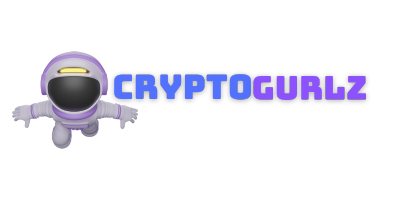Cryptocurrency Prices by Coinlib

What is Canto Blockchain? Understanding Canto & Its DeFi Ecosystem
In the current blockchain landscape, several alternative layer-1 blockchains are stepping into the game as the demand for more scalability and efficiency grows. Canto blockchain is one of those latest blockchain platforms, offering a unique blend of Ethereum compatibility and Cosmos-based architecture. It aims to push the boundaries in DeFi space by offering a novel public infrastructure and user-centric ecosystem.
This blog delves into understanding Canto and its features that makes it a promising contender in the blockchain space. Let’s explore how it seeks to redefine decentralized finance for the future.
What is Canto Blockchain?
Canto is a generalizable layer-1 (L1) blockchain designed to empower developers to create smart contracts and decentralized applications (dApps). Like Ethereum, Canto operates on a proof-of-stake (PoS) consensus mechanism which makes it a more energy-efficient and environmentally friendly option. What truly sets Canto apart is its commitment to providing an innovative public infrastructure that fulfils the need of decentralized finance (DeFi).
How Canto Blockchain works?
Canto leverages the Cosmos SDK (software development kit) and runs on the Tendermint consensus engine while utilizing Ethermint to share compatibility with Ethereum Virtual Machine (EVM). This EVM compatibility allows developers to effortlessly migrate their existing smart contracts and dApps from Ethereum to Canto. Additionally, users can interact with Canto using familiar wallets like Metamask. Canto also uses Geth – a reliable Ethereum execution client – making its user experience similar to Ethereum.
While being an EVM-chain, Canto has several novel features – such as unique gas model, a six-second block time, and Tendermint consensus. All these features distinguish it from other EVM-based blockchain network like Arbitrum and Optimism.
Unique Aspects of Canto: DEX, Lending Market, and $NOTE
Canto DEX
Canto DEX is a decentralized exchange built natively on top of the Canto blockchain. It is designed to prevent rent-seeking behaviors such as maximal extractable value (MEV). Such happening occurs when an entity attempts to gain benefits without contributing any reciprocal value. Canto DEX mitigates this by having no official interface, being non-upgradeable, and not implementing fees. Users can still become liquidity providers with two types of liquidity pools available: full-range and concentrated liquidity pools.
Canto Lending Market (CLM)
The Canto Lending Market (CLM) functions similarly to Ethereum’s Aave or Compound protocols. CLM accepts liquidity provider (LP) tokens from Canto’s native DEX as collateral and allows users to deposit these tokens as supply. This lending protocol is overseen by the onchain governance of stakers within the Canto DAO. Unlike Compound and Aave, CLM does not have its own lending token and its governance is far more decentralized while being managed by Canto DAO.
NOTE: The Native Unit of Account
In the Canto ecosystem, NOTE serves as this standardized numerical monetary unit. It is used the same as the dollar which is used to price goods and services in the real-world economy. NOTE is an over-collateralized stablecoin with its interest rate policy centered around $1 USD. Unlike other tokens, NOTE is not minted. Instead, it’s borrowed from the Accountant – a smart contract that implements the algorithmic interest rate policy through the Canto Lending Market. A portion of the interest generated from lending NOTE goes to the community treasury and for funding public goods within the Canto ecosystem.
CANTO Token
In addition to NOTE, Canto has another native cryptocurrency – the CANTO token. While NOTE is an ERC-20 token minted through smart contracts, CANTO is minted as a token on the Canto blockchain and distributed as block rewards to validators. These two tokens play crucial roles within the Canto ecosystem and drive both its economic model and governance further.
Value Proposition From Canto
Canto has ambitious goals and it is aiming to create a more equitable and robust decentralized financial ecosystem. While the promise of decentralized finance (DeFi) is often touted as being fairer than traditional finance, power and wealth tend to consolidate among the early investors and people with higher liquidity. As challenges like rent-seeking and Sybil attacks remain prevalent in the blockchain space, Canto seeks to address this issue through its free public infrastructure. Its unique approach towards building a blockchain platform and DeFi focused ecosystem makes Canto more preferable among crypto native investors.
Conclusion
Canto offers unique opportunities for developers and users alike to grow farther in the crypto ecosystem. With its EVM compatibility, native DEX, and a unique lending market – Canto is well-positioned to make a significant impact in the DeFi space. As Canto continues to evolve, it will be fascinating to see how it navigates these challenges and fulfills its mission of creating a more accessible and decentralized financial future.
Also Read: Top 5 Most Undervalued Layer 1 Blockchain Projects 2024
